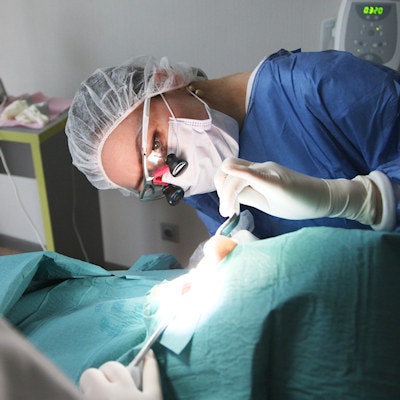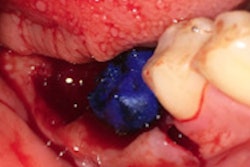
A recent case report detailed an incident in which a man went blind after a tooth extraction. The experience led the authors to call for delaying minor dental surgeries such as tooth extractions for patients with diabetes who have recently recovered from COVID-19.
The man described in the report had diabetes and lost sight in one eye after a tooth extraction led to the development of cavernous sinus thrombosis. Based on the incident, the authors called for at least an eight-week delay in performing minor oral surgeries after a person recovers from COVID-19.
"We relate the incidence of cavernous sinus thrombosis and blindness to not deferring the tooth extraction into the safe timing and the neglecting of the safety precautions concerning the patients' immune and thrombotic states," wrote the group, led by Dr. Mohamed Abdelmoiz, PhD, a lecturer in the department of oral and maxillofacial surgery at Beni-Suef University in Egypt (Journal of Oral and Maxillofacial Surgery, December 30, 2021).
Aggravating conditions
Abdelmoiz and colleagues described the case of a 69-year-old man with well-managed diabetes who was admitted to the hospital for hypoxia and fever. The man was conscious with no neurological issues, but he was dehydrated with elevated blood pressure and an oxygen saturation level of 88%. A computed tomography scan of the man's chest showed bilateral subpleural patchy areas of ground-glass opacities, and a polymerase chain reaction test confirmed that he was infected with the novel coronavirus, according to the authors.
After seven days of treatment with steroids, intravenous antibiotics and fluids, oxygen therapy, antiviral drugs, and anticoagulants, the patient's health improved significantly. Five days later, he tested negative for SARS-CoV-2 and was discharged from the hospital. At that time, he was told to continue taking an anticoagulant daily.
However, 12 days after discharge, the man experienced pain in a fractured right maxillary second molar. He went to see a general dentist, who reviewed his medical history and diagnosed him with a right maxillary retained root.
After performing a routine exam, the dentist pulled the tooth without prescribing a prophylactic antibiotic or checking the man's D-dimer level, which can indicate deep vein thrombosis. The patient later began having severe headaches and disturbed levels of consciousness. He returned to the hospital and was admitted into the intensive care unit, where he underwent imaging.
A brain magnetic resonance venography (MRV) exam with contrast showed transverse and sigmoid venous thrombosis. The MR imaging revealed cavernous sinus thrombosis and sinusitis in the right maxillary and sphenoid sinuses, the authors wrote.
The patient was treated for nine days, and a follow-up brain MRV exam showed his transverse and sigmoid venous thrombosis had improved. He was going to be discharged; however, he then reported having a large, firm swelling in his right cheek and having trouble moving his right eye in all directions.
A clinical exam revealed the man had an intraoral canine space infection with extraoral buccal space swelling on the right side. His team referred him to the ear, nose, and throat and ophthalmology departments for consultation.
An ophthalmologist reported that the patient had a relative afferent pupillary defect (RAPD), ptosis with eye-movement limitation in all directions, and a central retinal artery occlusion. The diagnosis of cavernous sinus thrombosis was confirmed, the authors noted.
The man underwent functional endoscopic sinus surgery, and his canine space was drained. Though he recovered from the cavernous sinus thrombosis and his eye and lid movements improved, he lost vision in his right eye.
Potential risk of thrombosis
In addition to causing flu-like symptoms, respiratory distress, and more, COVID-19 may induce endothelial inflammation and hypercoagulability, according to the authors. This exacerbates existing endothelial dysfunction among patients with diabetes and makes them more at risk of aggressive thrombosis, they added.
Patients with diabetes and SARS-CoV-2 infection are at risk of an aggressive inflammatory response and thrombotic events; therefore, clinicians should consider postponing minor oral surgeries for eight to 12 weeks after recovery. Patients admitted to intensive care units should delay dental surgeries until 12 weeks after recovery, the authors wrote.
For three months after recovery from COVID-19, patients should be tested for indicators of blood clots before any elective surgical procedure. Meanwhile, any change in the patient's anticoagulant regimen must be addressed by the treating doctor, and a prophylactic antibiotic should be considered prior to tooth extraction to prevent aggressive infections.
Abdelmoiz and colleagues noted that recommendations in the case report are only their opinions. They are, however, awaiting clinical trial outcomes to provide evidence-based regulations.
"In conclusion, the COVID-19 infection and DM [diabetes mellitus] represent two worldwide pandemics, where, when combined, the patients are susceptive to aggressive inflammatory response and morbid thrombosis," they wrote.




















